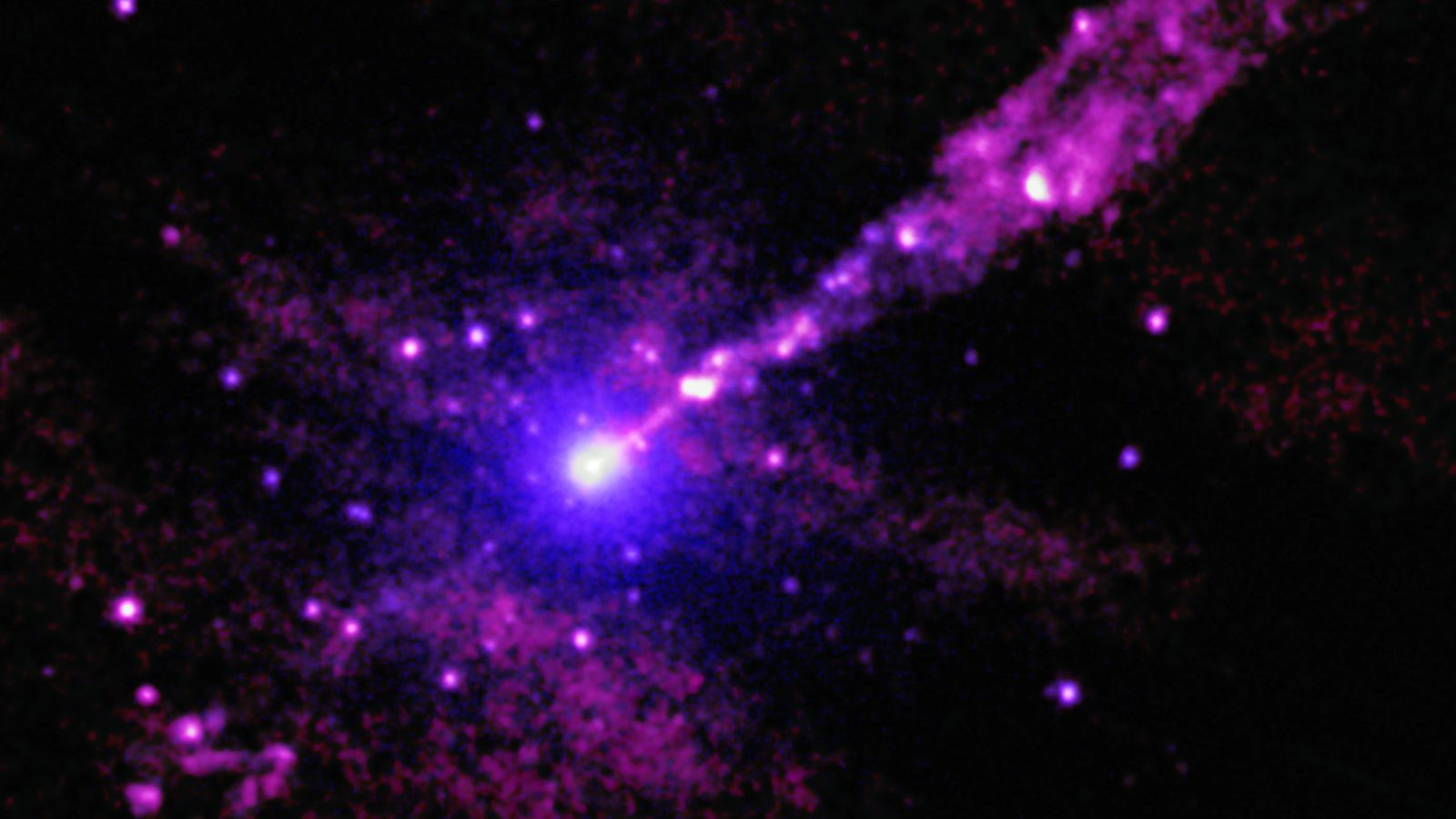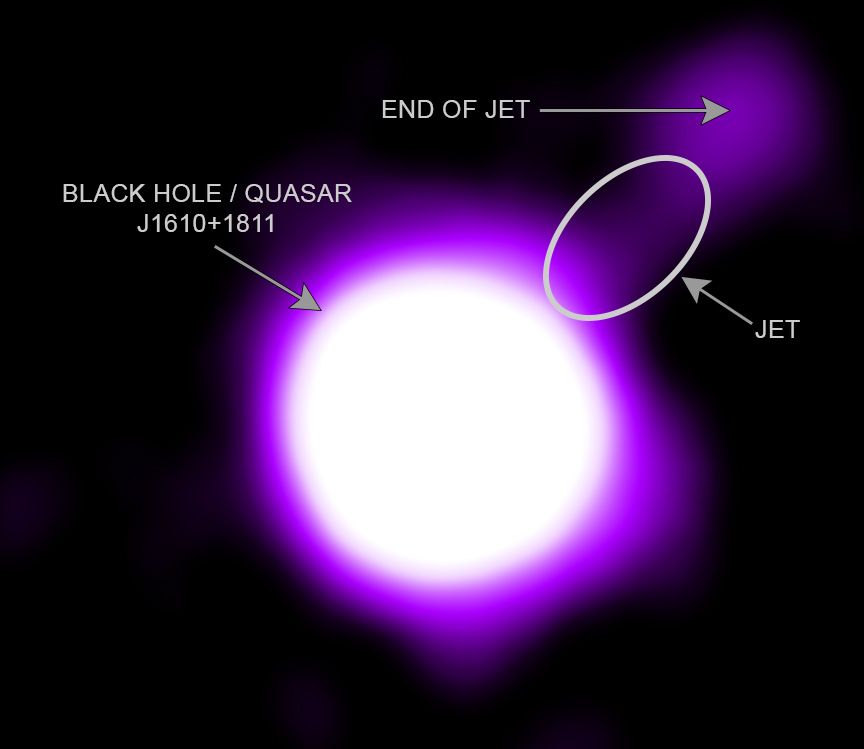⚫ These black holes interact with the fossil light from the Big Bang
Follow us on Google News (click on ☆)
These discoveries, made through observations from the Chandra space telescope and the VLA radio telescope array, reveal jets extending nearly 300,000 light-years. They originate from quasars located more than 11 billion light-years from Earth, showcasing intense activity during the Universe's early ages.

A powerful jet emanating from the supermassive black hole at the heart of galaxy Cen A.
Credit: NASA/CXC/SAO/D. Bogensberger et al; Image Processing: NASA/CXC/SAO/N. Wolk;
Researchers were able to observe these jets when the Universe was only 3 billion years old. This period was marked by rapid growth of galaxies and their central black holes. The jets provide a unique glimpse into the conditions prevailing at that time.
The study suggests these jets are visible due to the interaction between the electrons they contain and photons from the cosmic microwave background, the fossil light from the Big Bang. This collision accelerates photons until they transform into X-rays, detectable by our instruments. This mechanism explains why these structures remain observable despite their distance.
Analyses reveal that particles in these jets travel at speeds approaching that of light. The energy released is comparable to that produced by 10 trillion suns, a figure illustrating the extreme violence of these phenomena.
These observations help astronomers better understand the influence of supermassive black holes on galaxy evolution. The jets, by interacting with their environment, play a key role in regulating star formation and the distribution of matter in the young Universe.

X-ray image of quasar J1610+1811, showing a jet extending across cosmic distances.
Credit: X-ray: NASA/CXC/CfA/J. Maithil et al.; Illustration: NASA/CXC/SAO/M. Weiss; Image Processing: NASA/CXC/SAO/N. Wolk
How do black hole jets interact with the cosmic microwave background?
Jets emitted by supermassive black holes contain electrons moving at near-light speeds. When these electrons collide with photons from the cosmic microwave background, they transfer some of their energy.
This process, known as inverse Compton scattering, transfers energy to the photons until they form X-rays. This makes the jets visible across cosmic distances.
The cosmic microwave background, a remnant of the Big Bang, was denser in the young Universe. This increased density facilitated interactions with particles in the jets, amplifying their visibility.
This discovery opens new perspectives for studying the physical conditions in the primordial Universe through observation of these interactions.
What is the impact of supermassive black holes on galaxy evolution?
Supermassive black holes, by emitting jets of energetic particles, profoundly influence their host galaxies. These jets can heat surrounding gas, preventing new star formation.
In some cases, they can also compress gas, triggering instead a burst of star formation. This dual role illustrates the complexity of mechanisms governing galaxy evolution.
Observations of ancient jets allow tracing the history of these interactions. They reveal how black holes have shaped galaxies over billions of years.
Understanding these processes is essential for reconstructing the history of the Universe and predicting its future evolution.